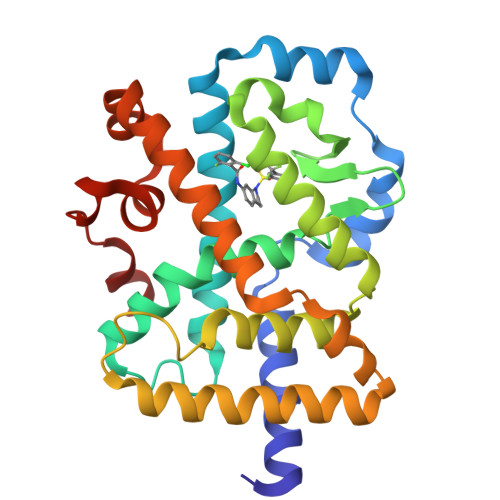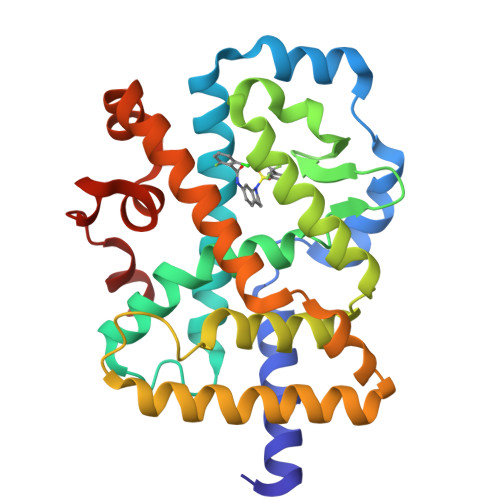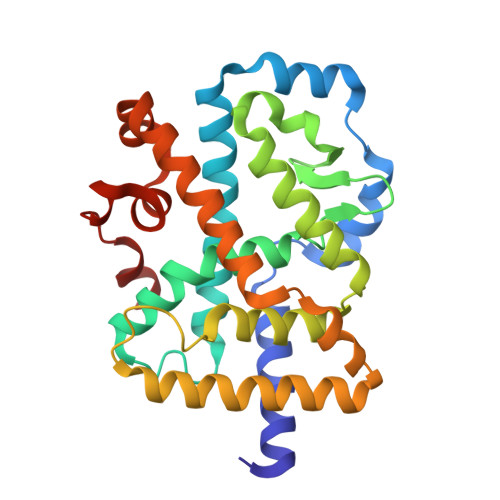HDX-MS reveals structural determinants for ROR gamma hyperactivation by synthetic agonists.
Strutzenberg, T.S., Garcia-Ordonez, R.D., Novick, S.J., Park, H., Chang, M.R., Doebellin, C., He, Y., Patouret, R., Kamenecka, T.M., Griffin, P.R.(2019) Elife 8
- PubMed: 31172947
- DOI: https://doi.org/10.7554/eLife.47172
- Primary Citation of Related Structures:
6NWS, 6NWT, 6NWU - PubMed Abstract:
Members of the nuclear receptor (NR) superfamily regulate both physiological and pathophysiological processes ranging from development and metabolism to inflammation and cancer. Synthetic small molecules targeting NRs are often deployed as therapeutics to correct aberrant NR signaling or as chemical probes to explore the role of the receptor in physiology. Nearly half of NRs do not have specific cognate ligands (termed orphan NRs) and it's unclear if they possess ligand dependent activities. Here we demonstrate that ligand-dependent action of the orphan RORγ can be defined by selectively disrupting putative endogenous-but not synthetic-ligand binding. Furthermore, the characterization of a library of RORγ modulators reveals that structural dynamics of the receptor assessed by HDX-MS correlate with activity in biochemical and cell-based assays. These findings, corroborated with X-ray co-crystallography and site-directed mutagenesis, collectively reveal the structural determinants of RORγ activation, which is critical for designing RORγ agonists for cancer immunotherapy.
Organizational Affiliation:
Department of Molecular Medicine, The Scripps Research Institute, Jupiter, United States.

















